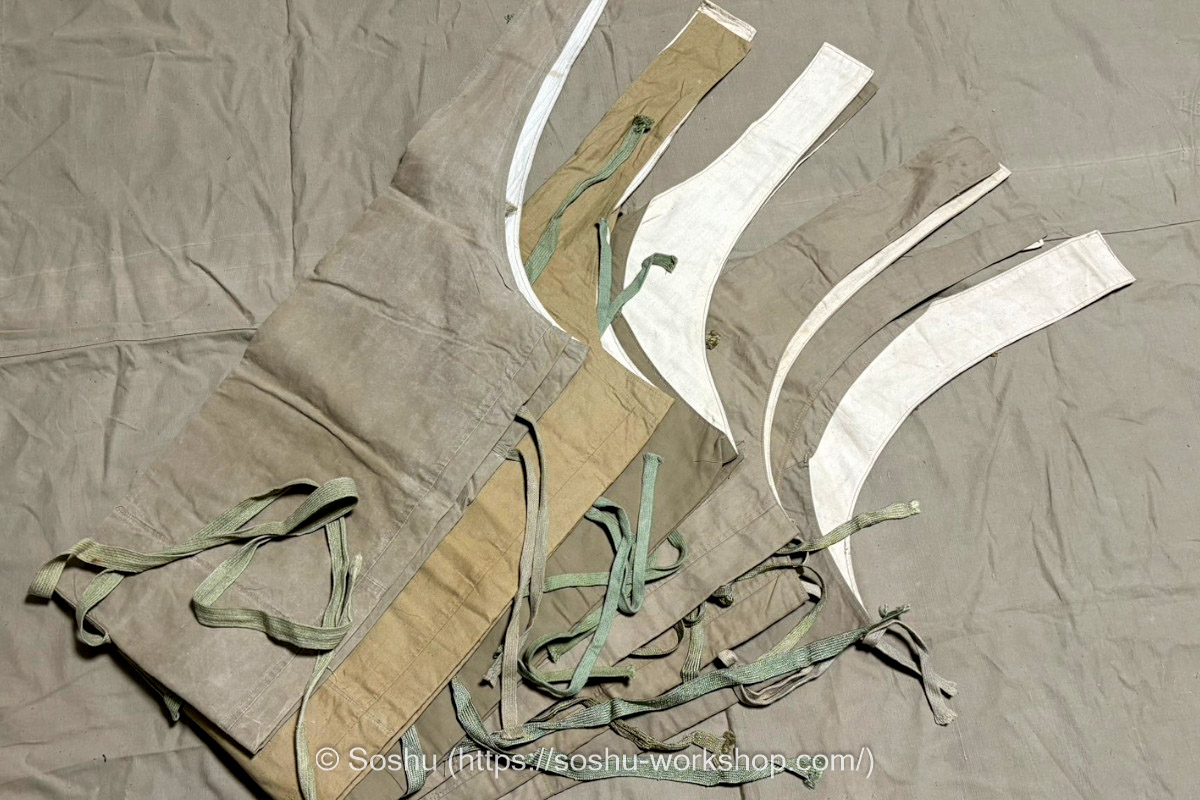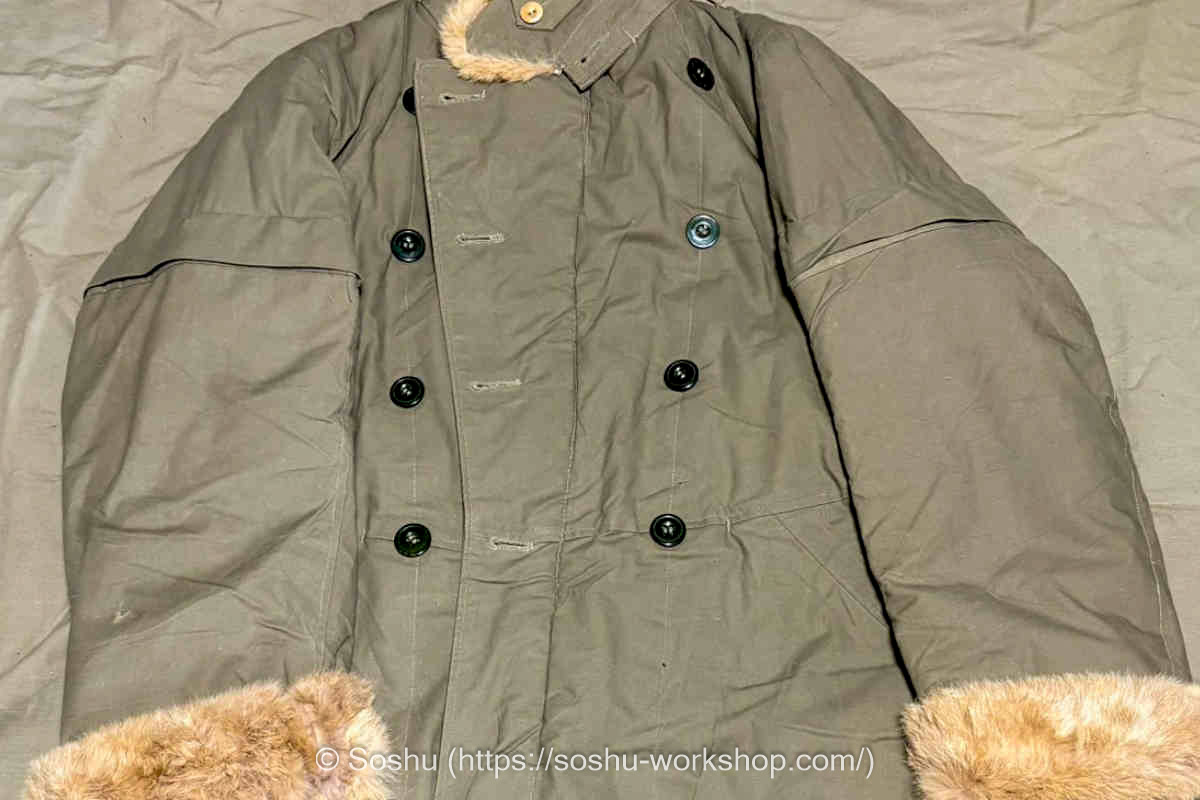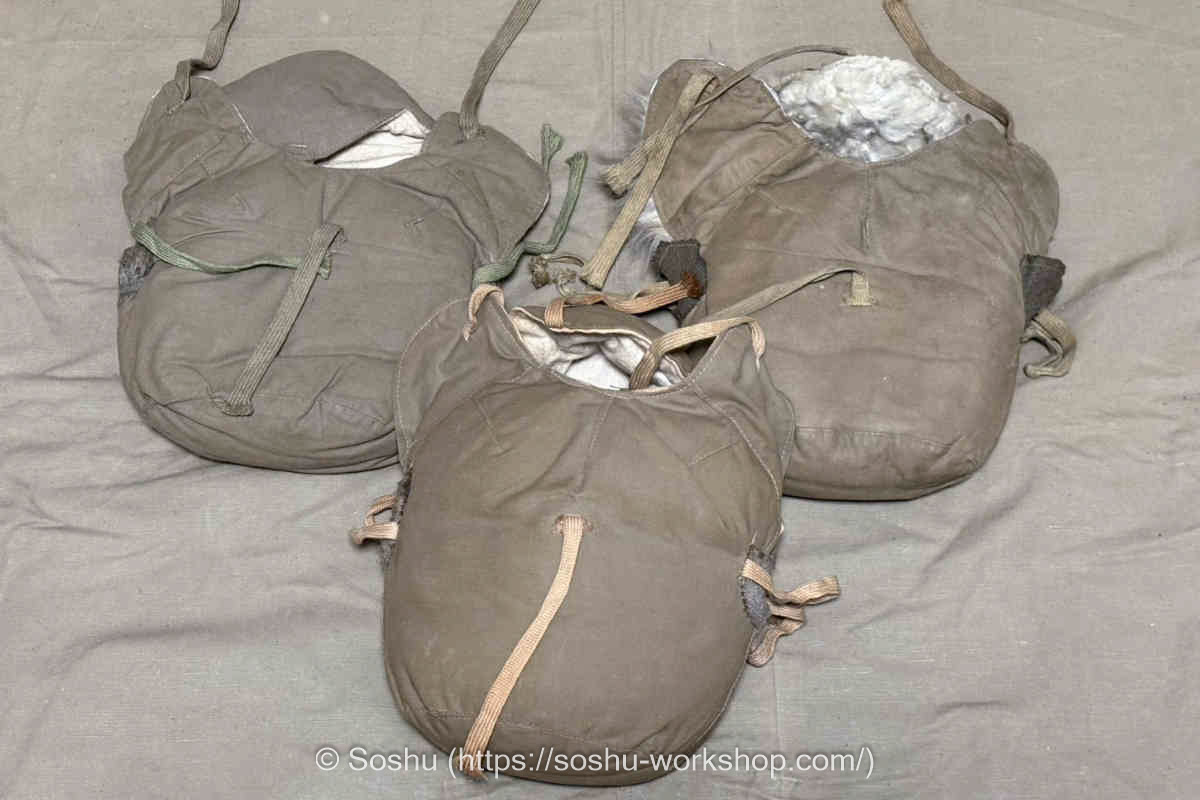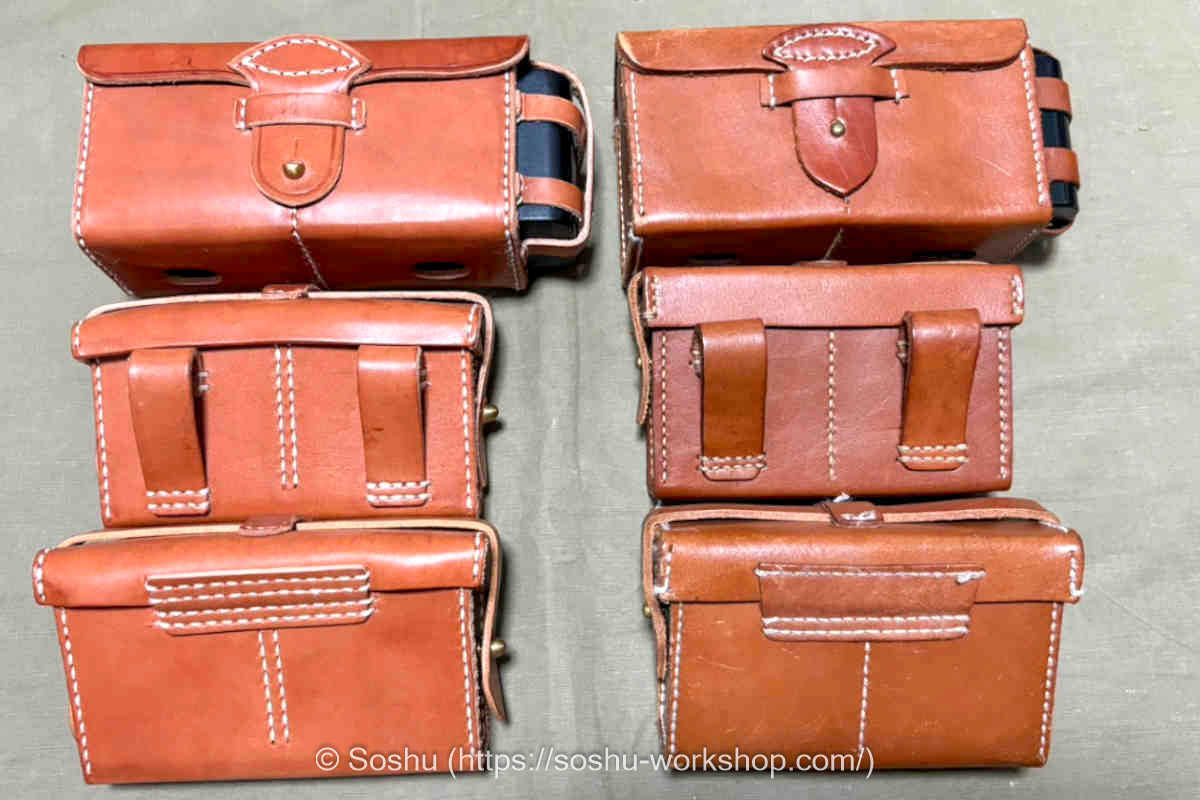Introduce the attire of the Imperial Japanese Army, which encompasses not only uniforms such as military clothing but also personal equipment such as canteens, mess kits, backpacks, and footwear.
The Tube Bag was standardized in 1919 and was used with almost no changes in shape until the late stages of the Greater East Asia War. This time, I would like to introduce several actual Tube Bags manufactured in the latter half of the war and compare and examine their quality.
Here is a comparison of authentic Cold Weather Coats. I also show examples of how to wear the full cold-weather gear.
Using authentic examples of the Cold Weather Canteen Cover, I will compare the differences between each variant.
I will introduce the HIKISHOP reproduction of the Type 30 ammunition pouches, comparing it side‑by‑side with the S&Graf version.
Using authentic Type 98 Sun Hats, I will compare several variants with different specifications. An early model with ventilation holes on the top and both sides is also included.
Using authentic Type 96 Cold Weather Cap, I will compare examples from several production years. I will also introduce specimens that still retain their original nose cover.
This article introduces how to fold a Shelter Half. Since there was no clear regulation, folding methods may have varied between units, but this guide is based on a method I learned previously.






